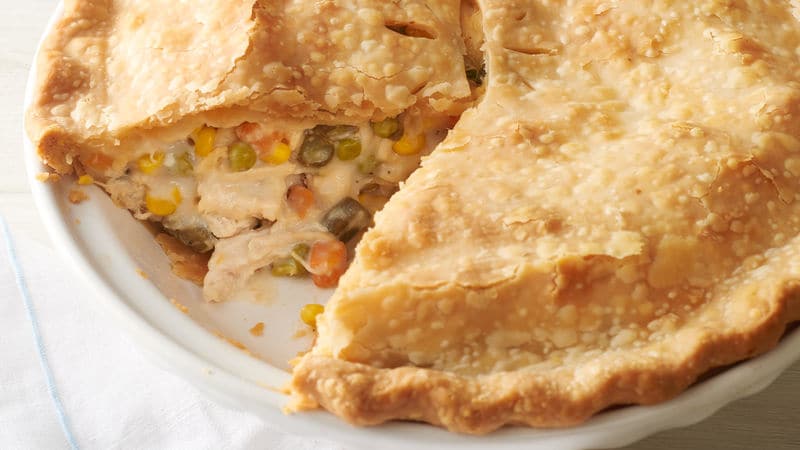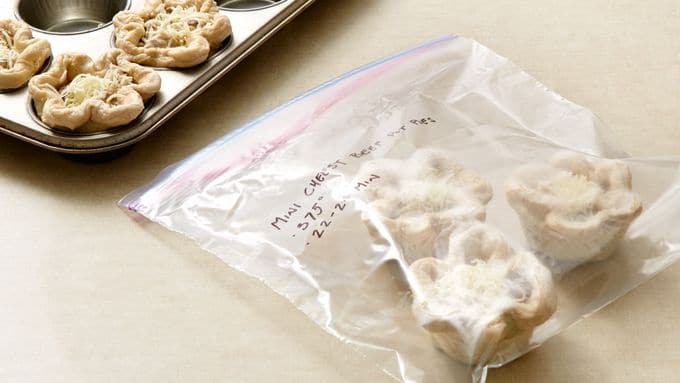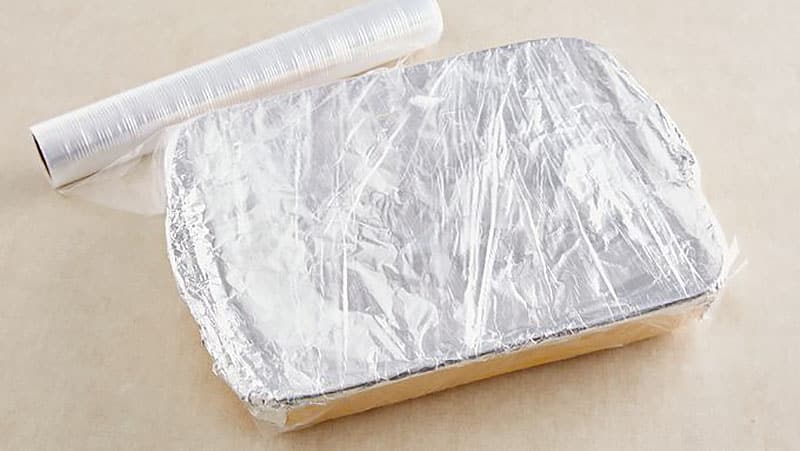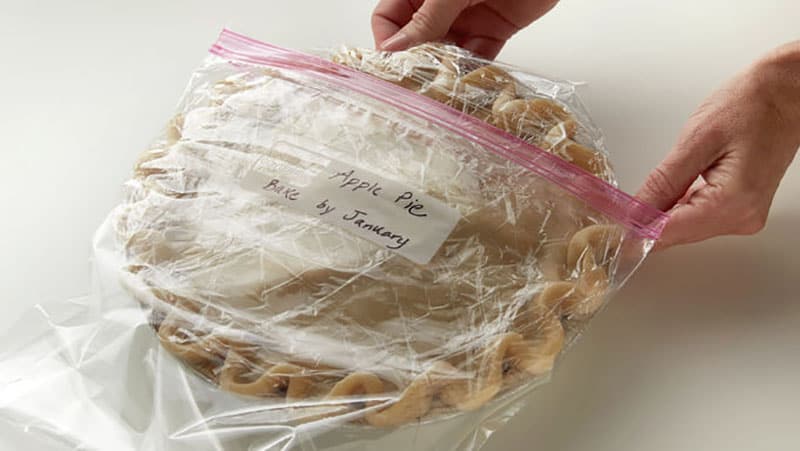(function() {
document.addEventListener('DOMContentLoaded', function() {
var componentMetadata = JSON.parse('\x7b\x22componentName\x22\x3a\x22Breadcrumb_636ddad1-b218-438c-87ad-b9aa8780bc89\x22,\x22deferOptions\x22\x3a\x7b\x22deferComponent\x22\x3afalse,\x22deferType\x22\x3a\x22None\x22,\x22deferId\x22\x3a\x22r7040418c9739486f8986782af4463a21\x22,\x22deferredContainerId\x22\x3a\x22\x2fcommonBreadcrumb\x22,\x22deferredContainerView\x22\x3anull\x7d,\x22viewName\x22\x3a\x22Breadcrumb\x22\x7d');
var configuration = {"links":[{"url":"/","label":"Home"},{"url":"/everyday-eats/dinner-tonight/the-best-ways-to-store-your-favorite-foods-in-the-freezer","label":"The Best Ways to Store Your Favorite Foods in the Freezer"}]};
var moduleName = 'breadcrumb';
var isVueModule = true;
GeneralMills.PandoSites.RegisterControlInstance(moduleName, configuration, componentMetadata, isVueModule)
});
})();
(function() {
document.addEventListener('DOMContentLoaded', function() {
var componentMetadata = JSON.parse('\x7b\x22componentName\x22\x3a\x22ActionToolbar_bcfe5168-4c6e-4b8a-8181-233a0a250020\x22,\x22deferOptions\x22\x3a\x7b\x22deferComponent\x22\x3atrue,\x22deferType\x22\x3a\x22OnDemand\x22,\x22deferId\x22\x3a\x22r34b518ed13a64381abecfdcff90b0322\x22,\x22deferredContainerId\x22\x3a\x22\x2ffloatingActionToolbar\x2ffloatingActionToolbar_interop\x22,\x22deferredContainerView\x22\x3a\x22InteropDeferWrapper\x22\x7d,\x22viewName\x22\x3a\x22ActionToolbar\x22\x7d');
var configuration = {"contentId":"636ddad1-b218-438c-87ad-b9aa8780bc89","toolbarSettings":{"id":"bcfe5168-4c6e-4b8a-8181-233a0a250020","regAction":"FAVORITE","eSourceCode":14171,"namePassedToEvents":"ArticleStandardLongFormToolbar","buttons":[{"providerName":"pinterest","providerNamePassedToEvents":"Pinterest","shareUrlFormat":"//pinterest.com/pin/create/link/?url={0}","id":"63cf42f0-8fed-4b1c-acbe-0fe44811231d","allowedForAnonymousUsers":true,"type":"Social","displayName":"Pinterest","toggleDisplayName":"","namePassedToEvents":"Pinterest","cssClassName":"atButtonPinterest","privacyOptOutMessage":"\u003cdiv class=\u0027privacyMessage\u0027\u003e\n\u003ch3\u003eThis feature is not available with your current cookie settings.\u003c/h3\u003e\n\u003cp\u003eYou can \u003ca href=\u0027#\u0027 data-show-preference-center=\u00271\u0027\u003eupdate your privacy settings\u003c/a\u003e to enable this content. Please enable “Functional Cookies” to use this feature.\u003c/p\u003e\n\u003c/div\u003e","showPrivacyOptOutMessage":false},{"addFavoriteErrorMessage":"Sorry, something went wrong. Please save again.","removeFavoriteErrorMessage":"Error occurred while removing from favorites","regAction":"FAVORITE","eSourceCode":14171,"isCurrentUserAnonymous":false,"isFavoriteItem":false,"id":"351369d5-f1b1-4a90-b495-16074575bb8a","allowedForAnonymousUsers":false,"type":"Favorite","displayName":"Save","toggleDisplayName":"Saved","namePassedToEvents":"Favorite","cssClassName":"atButtonFavorite","privacyOptOutMessage":"\u003cdiv class=\u0027privacyMessage\u0027\u003e\n\u003ch3\u003eThis feature is not available with your current cookie settings.\u003c/h3\u003e\n\u003cp\u003eYou can \u003ca href=\u0027#\u0027 data-show-preference-center=\u00271\u0027\u003eupdate your privacy settings\u003c/a\u003e to enable this content. Please enable “Functional Cookies” to use this feature.\u003c/p\u003e\n\u003c/div\u003e","showPrivacyOptOutMessage":false},{"providerName":"facebook","providerNamePassedToEvents":"Facebook","shareUrlFormat":"//facebook.com/sharer/sharer.php?u={0}","id":"6d176960-1afd-4a34-83b5-795429359551","allowedForAnonymousUsers":true,"type":"Social","displayName":"Facebook","toggleDisplayName":"","namePassedToEvents":"Facebook","cssClassName":"atButtonFacebook","privacyOptOutMessage":"\u003cdiv class=\u0027privacyMessage\u0027\u003e\n\u003ch3\u003eThis feature is not available with your current cookie settings.\u003c/h3\u003e\n\u003cp\u003eYou can \u003ca href=\u0027#\u0027 data-show-preference-center=\u00271\u0027\u003eupdate your privacy settings\u003c/a\u003e to enable this content. Please enable “Functional Cookies” to use this feature.\u003c/p\u003e\n\u003c/div\u003e","showPrivacyOptOutMessage":false},{"templateId":"eb460499-2547-4f84-a197-60f31934a3b9","dialogHeading":"Email Article","emailCode":"PB_ContentEmail","dialogSettings":{"cancelButtonText":"Cancel","copyToSenderLabel":"Send a copy to myself","emailAddressesLabel":"* Email Address","emailInstructionText":"Separate email addresses with commas","fromText":"From:","privacyPolicyText":"\u003cp\u003e\u0026copy;2025 General Mills, Inc. All Rights Reserved. This information will only be used to send an email to your friend(s) and will not be saved. Please read our \u003ca rel=\u0022noopener noreferrer\u0022 rel=\u0022noopener noreferrer\u0022 href=\u0022http://www.generalmills.com/company/privacy-policies/privacy-policy-us\u0022 target=\u0022_blank\u0022 shape=\u0022rect\u0022\u003ePrivacy Policy\u003c/a\u003e.\u003c/p\u003e","requiredFieldText":"* Required","sendButtonText":"Send","senderEmailAddressLabel":"* Your Email Address","senderFirstNameLabel":"* Your First Name","sendToText":"Send To:"},"id":"2a5b12c8-299b-467d-812e-41e9a0afb70d","allowedForAnonymousUsers":true,"type":"Email","displayName":"Email","toggleDisplayName":"","namePassedToEvents":"Email","cssClassName":"atButtonEmail","privacyOptOutMessage":"\u003cdiv class=\u0027privacyMessage\u0027\u003e\n\u003ch3\u003eThis feature is not available with your current cookie settings.\u003c/h3\u003e\n\u003cp\u003eYou can \u003ca href=\u0027#\u0027 data-show-preference-center=\u00271\u0027\u003eupdate your privacy settings\u003c/a\u003e to enable this content. Please enable “Functional Cookies” to use this feature.\u003c/p\u003e\n\u003c/div\u003e","showPrivacyOptOutMessage":false},{"layoutParameter":"p%3d1","id":"783fefb5-010a-4be1-b84d-f0447da7c52c","allowedForAnonymousUsers":true,"type":"Print","displayName":"Print","toggleDisplayName":"","namePassedToEvents":"Print","cssClassName":"atButtonPrint","privacyOptOutMessage":"\u003cdiv class=\u0027privacyMessage\u0027\u003e\n\u003ch3\u003eThis feature is not available with your current cookie settings.\u003c/h3\u003e\n\u003cp\u003eYou can \u003ca href=\u0027#\u0027 data-show-preference-center=\u00271\u0027\u003eupdate your privacy settings\u003c/a\u003e to enable this content. Please enable “Functional Cookies” to use this feature.\u003c/p\u003e\n\u003c/div\u003e","showPrivacyOptOutMessage":false}],"isSticky":true},"userSettings":{"isCurrentUserAnonymous":true,"isFavoriteItem":false,"isAnonymousUserWithFavorites":false},"pageAttributes":{"url":"https%3a%2f%2fwww.pillsbury.com%2feveryday-eats%2fdinner-tonight%2fthe-best-ways-to-store-your-favorite-foods-in-the-freezer","contentId":"636ddad1-b218-438c-87ad-b9aa8780bc89"},"recaptchaPublicKey":"6LceAigUAAAAAC8aIQvJ9yRpRl3r1ZBKbou-tIDe"};
var moduleName = 'actionToolbar';
var isVueModule = true;
GeneralMills.PandoSites.RegisterControlInstance(moduleName, configuration, componentMetadata, isVueModule)
});
})();
What Do You Want to Freeze?
Fresh Fruits and Vegetables

Stock up on your favorite fruits and veggies when they’re in season, freeze at peak freshness and enjoy them all year round. Once frozen, fruits can last up to 12 months without compromising quality; vegetables can be stored up to 18 months.
How to Freeze Fruits and Vegetables
Unlike many other foods you freeze, fruits and vegetables can’t just be tossed in a bag or container and frozen. They have a relatively high water content, and will freeze to each other. Before freezing fruits and vegetables, wash, dry and prep them so that they are in the state you’ll want to use them after defrosting (peeled, pitted, sliced and so on). Small items, like blueberries, can be left whole. Spread your prepped fruits or veggies in a single layer on a parchment-lined sheet pan and freeze for 1 hour, then transfer pieces to freezer-safe containers and seal, removing as much air as possible.
A few tried-and-true freezer-friendly veggies include tomatoes, kale, spinach, corn, zucchini and cucumbers. Freezing fruit? Our friends at Betty Crocker put together a comprehensive how-to guide featuring specific methods for freezing popular fruits like blueberries, strawberries, peaches and cantaloupe.
Freezer Storage Tip
Freezer Storage Tip
When freezing food, air is not your friend. Choose heavy-duty freezer bags or airtight containers to store your veggies and prevent freezer burn.
Best Uses for Frozen Fruits and Vegetables
In our experience, frozen fruits and vegetables work wonderfully in recipes, but not for eating on their own. Why? Freezing fruits and vegetables locks in flavor, nutrition and color, but the downside is that they tend to break down as they thaw, and the ice that forms when they’re frozen (again, that high water content!) means they’ll be mushy compared to their fresh counterparts. Moral of the story: Add them to smoothies, soups, pies, casseroles, sauces, jams or any other of your favorite recipes, but don’t try to make a fruit or veggie platter.
Here are a few of our favorite ways to use frozen fruits and vegetables:
Meats and Poultry
Go ahead, stock up on your favorite fresh meats and poultry when they’re on sale—they can keep up to a year without sacrificing quality (see below). Generally, uncooked ingredients maintain freshness longer in the freezer compared to cooked.
How to Freeze Fresh Meat and Poultry
For best results, freeze and store meat in meal-sized portions to prevent exposing other portions to the air while removing the amount you wish to reheat. Wrap your meat in either plastic wrap or foil and then place in a heavy-duty freezer bag to minimize the risk of freezer burn.
Fresh meat: Steaks, chops and roasts can be frozen up to 12 months. Ground meats will keep in the freezer for 3 to 4 months.
Fresh poultry: A whole chicken or turkey can be frozen up to 1 year; pieces will keep up to 9 months.
Freezer Storage Tip
Freezer Storage Tip
To initially freeze your meat, spread portions in a single layer so they freeze evenly. Once frozen, you can stack them to take up less space in your freezer.
You can also freeze cooked meat and poultry with great results, although they have shorter shelf lives than their uncooked counterparts. The USDA states that once cooked meat or poultry is frozen, it should be used within 2 to 6 months. These excellent dinner-starters can all be made ahead and frozen for later:
Soup, Stew and Chili
A cozy bowl of soup is the ultimate warm-up meal on chilly nights, and you can stock your freezer with all your favorites so you have easy heat-and-eat options when you need them. Soup will last 2 to 3 months in the freezer, so you can make a big batches in the fall and enjoy them all winter.
How to Freeze Soup
Prepare soup as directed and let cool to room temperature. The best cooling method is to remove soup from heat and allow it to cool on its own, but to speed up the cooling process, you can place soup uncovered in the refrigerator for up to 30 minutes with hot pads or a trivet underneath. (Note: Do not leave hot soup in the fridge longer than 30 minutes, as this can raise the internal temp of your fridge too much.)
Pour cooled soup into a 2-gallon resealable freezer plastic bag (or 1-gallon or quart-sized bags for smaller batches or individual portions), leaving 1/2 to 1 inch at top for expansion, and seal. To thaw, move your soup into the fridge overnight.
Freezer Storage Tip
Freezer Storage Tip
Lay sealed freezer bags flat inside your freezer until contents are frozen solid. Stack bags to keep them organized and make the most of your freezer space.
Whether you’re hosting a soup swap or simply making dinner for your family ahead of time, we recommend freezing broth- or tomato-based soups. Soups with dairy ingredients such as cream, milk or cheese (think “cream of” anything, or chowders) and flour-thickened soups can become grainy once frozen.
Pot Pies

We’ve tested several of our pot pies to see how they fare in the freezer, and have found two methods we like best. For best results, use within 1 to 2 months of freeze date.
Method 1: For Full-Size Pot Pies
For full-size pot pies, like our Classic Chicken Pot Pie, we found that you get the best results if you prepare and freeze just the filling in advance, vs. the entire pot pie. We tested baking, freezing and reheating a complete pot pie, but found that by the time all the filling had heated through, the crust tasted overdone after essentially baking twice. We think our method of preparing and freezing the filling separately gives you the best of both worlds: You’ll save time and effort by skipping a few steps the day of making, and you’ll still get to enjoy a perfectly golden, flaky crust.
To freeze pot pie filling: Prepare as directed in recipe. Cool uncovered in refrigerator 30 minutes. Spoon mixture into 1-gallon freezer food storage plastic bag, leaving 1/2 to 1 inch at top of bag for expansion; seal. Freeze up to 1 month. To bake, thaw mixture overnight in refrigerator. Pour into 2-quart saucepan, heat over medium heat, 5 to 6 minutes, stirring frequently until thoroughly heated. Assemble, fill and bake pie as directed in recipe.
Method 2: For Mini Pot Pies
For a true heat-and-eat recipe—and maximum convenience—mini pot pies are the perfect option. Unlike full-size pot pies, mini pot pies should be cooked completely before being frozen; their small size means they’ll heat through quickly without compromising the flavor or texture of the crust.

To freeze mini pot pies: After placing unbaked pies in muffin cups, wrap muffin pan in foil and freeze completely, about 2 hours. Once pies are frozen, run knife around edge of pan to loosen; remove from muffin tin. Wrap each in plastic wrap, and place frozen pies in large resealable freezer plastic bag.
Casseroles
Freeze your favorite casseroles and have them on hand for easy dinners on busy nights. Most casseroles will keep in the freezer for 2 to 3 months; egg casseroles (like breakfast bakes or quiche) can be frozen up to 2 months.
How to Freeze a Casserole
Our friends at Tablespoon have put together a complete stey-by-step guide on How to Freeze Casseroles for Later, but our number-one tip is to freeze after assembling, but before baking.

When it comes time to bake your casserole, place it in the fridge for up to 48 hours to completely thaw. If your recipe doesn’t include specific freezer instructions, a good rule of thumb is to add 15 to 20 minutes to the cook time listed in the recipe.
Freezing Leftovers
If you want to freeze leftovers of a casserole you’ve already baked, the best way to do this is by freezing portions individually. That way, you can have the exact number of servings you need later. (This is especially handy for planning lunches!) Thaw servings in the refrigerator, and microwave as needed until heated through.
Here are some of our go-to freezer-friendly casseroles to enjoy. (And again, these are best frozen once they are assembled, but not baked.)
Cookies
Whether you’re stocking up in advance of Christmas, or want to enjoy dessert on demand any time of the year, cookies lend themselves well to freezing and defrosting.
For best results, we recommend freezing unfrosted cookies; unfrosted cookies can last up to 1 year in the freezer, while frosted cookies have a shorter freezer life of up to 3 months.
How to Freeze Cookies
After baking, allow cookies to cool completely. Next, arrange them in a single layer on a parchment paper-lined cookie sheet and place the cookie sheet in the freezer for about 1 hour. Doing this initial freeze will prevent cookies from sticking together when stored.
Once they’ve been individually frozen, place the cookies in single layers in an airtight container with wax paper between each layer.
When it’s time to enjoy, most cookies can be thawed uncovered in the container at room temperature for 1 to 2 hours. Crispy cookies should be removed from the container to thaw.
Freezing Cookie Dough
And if you want to freeze cookie dough for later, both our cookie dough rolls and our Pillsbury™ Ready to Bake!™ cookie dough can be frozen up to 2 months in advance. You’ll need to defrost the rolls of cookie dough before slicing and baking, but our Ready to Bake!™ cookies can be made straight from the freezer. Just choose exactly how many you want to bake (and we won’t judge if it’s all of them!).
Best Cookies to Freeze
Pies
In our experience, the best pies to freeze are baked pies. This includes fruit pies, as well as pumpkin pie and nut pies like pecan. Fruit pies can be frozen up to 4 months after baking; pumpkin and pecan pies, 1 to 2 months.
How to Freeze Pie
Assemble and bake pie as directed in recipe. Cool completely. Wrap pie tightly with plastic wrap. Place pie in a 2-gallon freezer storage bag; seal.

To thaw, place pie in refrigerator overnight. Remove bag and plastic wrap. Some pies, such as pecan and pumpkin, are usually enjoyed at room temperature and can be sliced and served as soon as they’re thawed. To reheat apple pie (or any other pie that is typically served warm), cover with foil and bake at 350°F for 25 to 30 minutes or until warmed through.
The worst pies to freeze: Custard, cream, chiffon and meringue pies do not freeze well. Also avoid freezing unbaked pies in general, particulary pumpkin pie or those made with fresh fruit (because of the high water content).
Best Pies to Freeze
Once baked, these all freeze, defrost and reheat beautifully:
Cakes
Have your cake and eat it later! Unfrosted cakes can be frozen up to 4 months, but we suggest 2 to 3 months for best quality.
How to Freeze Cake
Allow cake to cool completely (even one that is slightly warm is still releasing some moisture, which can lead to freezer burn) and wrap tightly in a layer of plastic wrap. If you’re freezing multiple layers for one cake, or a batch of cupcakes, wrap each piece separately vs. together. Place plastic-wrapped cakes in a plastic freezer bag or food storage container, or wrap in aluminum foil.
To thaw, loosen plastic wrap and let sit at room temperature for 2 to 3 hours.
Can you freeze a decorated cake?
Can you freeze a decorated cake?
Technically, yes—it will be safe to eat—but we don’t recommend it. Frosting will change texture when it defrosts and your cake won’t look its prettiest. For best results, don’t decorate frozen cakes until you plan to defrost and serve them.
To freeze cheesecake: Pre-cut your slices and place on cookie sheet lined with cooking parchment paper. Freeze cheesecake until solid, about 6 hours. Remove slices from freezer, and wrap each slice in double-layer of food-safe plastic wrap; store in airtight container in freezer. To thaw, simply move wrapped pieces to refrigerator 4 to 6 hours, then serve. Bonus: Baked cheesecake lasts up to 5 months in the freezer!
Kitchen-Tested Freezer Tips
We asked the experts in the Pillsbury test kitchens, and these are their all-time best tips for freezing your favorite foods:
- Remember to date your containers so you can keep track of how long contents have been frozen.
- Keep your freezer at 0°F or lower.
- Wrap your food in plastic wrap, foil or freezer-safe containers.
- Label and date all packages and containers before filling with food; they’re easier to write on, and if any ink happens to get through an empty container, it won’t get on your food.
- To prevent freezer burn, remove as much air from packages as possible and let hot cooked foods cool to room temperature before freezing.
- Store purchased frozen foods in their original packaging.
- Always thaw frozen meats, poultry and seafood in the refrigerator—never at room temperature. Or, thaw food in your microwave following manufacturer’s directions, then cook immediately.
(function() {
document.addEventListener('DOMContentLoaded', function() {
var componentMetadata = JSON.parse('\x7b\x22componentName\x22\x3a\x22NewsletterCTA_592b7e30-5c94-49d6-8316-3c4546d1dac2\x22,\x22deferOptions\x22\x3a\x7b\x22deferComponent\x22\x3atrue,\x22deferType\x22\x3a\x22OnDemand\x22,\x22deferId\x22\x3a\x22rc9c8827289b2465fb6b94510633f5d59\x22,\x22deferredContainerId\x22\x3a\x22\x2fprimaryColumn\x2finteropInlineNewsletterCta\x22,\x22deferredContainerView\x22\x3a\x22InteropDeferWrapper\x22\x7d,\x22viewName\x22\x3a\x22NewsletterCTA\x22\x7d');
var configuration = {"unsubscribedNewsletters":[{"listId":"6d3e858f-4804-4f38-9b8a-712a9a5668cc","thumbnailImageUrl":"/-/media/GMI/Core-Sites/PB/Images/Shared/myaccount/newsletters/PB_Email_Thumb_200x200.gif?sc_lang=en","previewUrl":"https://morpheus3.idpk.net/email_sends/10626/preview","name":"Pillsbury\u0027s Email","isPromo":false}],"settings":{"anonymousCopy":"Family-friendly meals made easy!","anonymousDescriptionCopy":"Make everyday family moments count, with easy recipes that everyone will love. Join our email community to receive tested recipes and tips.","anonymousThankYouCopy":"Thanks! Your first email is on its way.","anonymousThankYouDescriptionCopy":"\u003cp\u003e\u003cspan\u003eNow that you\u0026rsquo;re signed up, create an account on Pillsbury.com to save your favorite recipes, learn more about special promotions and get meal inspiration for any occasion.\u003c/span\u003e\u003c/p\u003e","anonymousButtonText":"Help me make mealtimes easier!","anonymousEmailInvalidErrorText":"Please enter a valid email address.","anonymousSubscribeErrorText":"We encountered an error while signing you up. Please try again.","anonymousEmailAddressPlaceholderText":"Enter your email address","anonymousEmailAddressLabel":"Email Address","anonymousLegalCopy":"By signing up, you accept our\u0026nbsp;\u003cspan style=\u0022text-decoration: underline;\u0022\u003e\u003ca rel=\u0022noopener noreferrer\u0022 href=\u0022https://www.generalmills.com/privacy-security/us-english-privacy-policy\u0022 target=\u0022_blank\u0022\u003ePrivacy Policy\u003c/a\u003e\u003c/span\u003e\u0026nbsp;and agree that your information may be used across our\u0026nbsp;\u003cspan style=\u0022text-decoration: underline;\u0022\u003e\u003ca rel=\u0022noopener noreferrer\u0022 href=\u0022https://www.generalmills.com/food-we-make/brands\u0022 target=\u0022_blank\u0022\u003efamily of brands\u003c/a\u003e.\u003c/span\u003e","requiredFieldText":"","backgroundColor":"#002E6D","accentColor":"","registrationUrl":"/user-profile/register?RegAction=SUBSCRIBERUPGRADE\u0026esrc=14171\u0026returnUrl=%2feveryday-eats%2fdinner-tonight%2fthe-best-ways-to-store-your-favorite-foods-in-the-freezer","registrationLinkText":"Sign up now","enableExpandedFields":false,"hideForSessionCookieExpiration":0,"ctaType":"StandardAnonymous","location":"Inline","userState":"Anonymous","sourceCodeOverride":0}};
var moduleName = 'newsletterCta';
var isVueModule = true;
GeneralMills.PandoSites.RegisterControlInstance(moduleName, configuration, componentMetadata, isVueModule)
});
})();